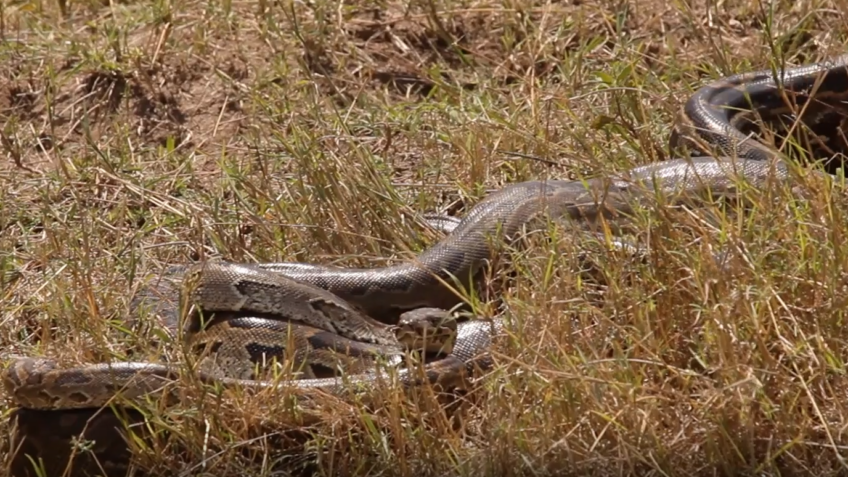When it comes to serpentine giants, the comparison between Titanoboa and Anaconda ignites a fascinating exploration into the world of these extraordinary creatures.
While they share a common ancestry and habitat, these two snake species are vastly different in many aspects.
Today, I will discuss these differences and provide an in-depth look at both species.
Key highlights:
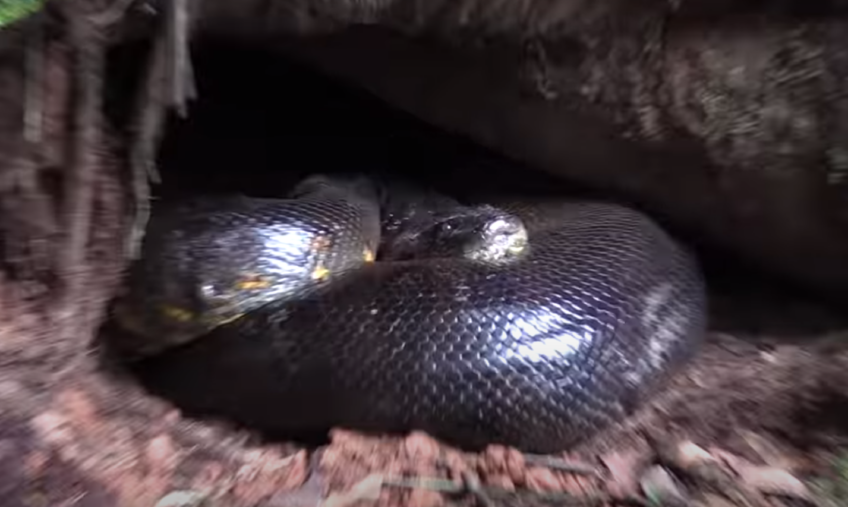
- Size Comparison: Readers will learn about the significant size difference, with Titanoboa being much larger than the Anaconda.
- Habitat and Lifestyle: The article highlights the distinct habitats and lifestyles of Titanoboa and Anacondas, including their preference for wet environments.
- Dietary Habits: Differences in their diets are explored, with Titanoboa primarily eating fish and Anacondas having a more varied diet.
- Physical and Anatomical Differences: The post discusses the unique physical features and skull shapes of both species, adapted to their specific hunting styles.
- Historical and Ecological Significance: Readers will gain insight into Titanoboa’s role in prehistoric times and Anacondas’ current ecological impact and conservation status.
Comparison Table
| Feature | Titanoboa | Anaconda |
| Length | 40-50 feet | 15-20 feet |
| Weight | Over 2500 pounds | Over 200 pounds |
| Habitat | First tropical rainforest, near water | Amazon, forests, grasslands, near water |
| Lifestyle | Mostly aquatic | Semi-aquatic, moves between land and water |
| Diet | Fish | Birds, turtles, fish, tapirs |
| Hunting Technique | Capture fish directly in the mouth | Constriction |
| Skull Shape | Adapted for hunting fish | Generalist |
| Time Period | Paleocene Epoch | Contemporary |
Size and Physical Dimensions
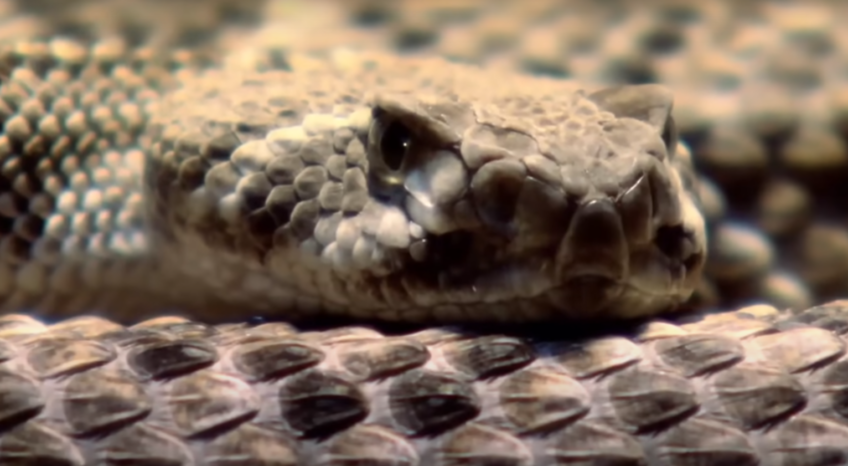
One of the most striking differences between Titanoboa and Anaconda is their size.
Titanoboa, the colossal snake from the Paleocene Epoch, reached an astonishing length of 40-50 feet and weighed over 2500 pounds.
In contrast, the modern Anaconda, though still impressively large, grows to about 15-20 feet in length and weighs over 200 pounds.
Habitat and Lifestyle

Both species thrived in South America, particularly in wet habitats near rivers and ponds.
Titanoboa, living in the world’s first tropical rainforest, likely spent most of its life in water due to its massive size.
Anacondas also prefer warm locations near water, like the Amazon, but they are more versatile, often found in forests and grasslands and moving between land and water as needed.
Diet and Hunting Techniques
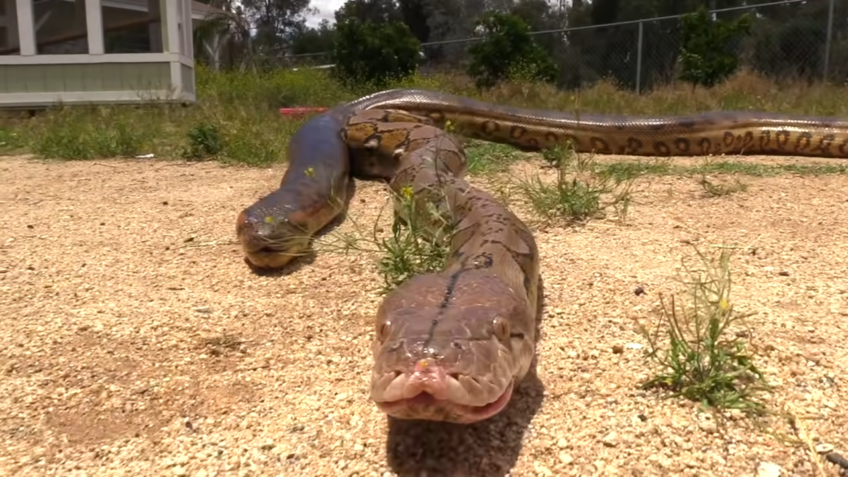
The dietary habits of these two species also highlight significant differences. Titanoboa had unique teeth adapted for eating fish, aligning with its aquatic lifestyle.
In contrast, Anacondas have a more traditional snake mouth and a generalist diet, feeding on birds, turtles, fish, and tapirs.
Additionally, while Anacondas use constriction to subdue their prey, Titanoboa likely captured fish directly with its large mouth.
Anatomical Differences

The skull shape of Titanoboa was distinct, designed for hunting fish, contrasting with the Anaconda’s more generalist jaw structure.
This difference in skull anatomy underscores the specialized nature of Titanoboa’s diet compared to the more varied diet of Anacondas.
Evolutionary Perspective
It’s important to note that Titanoboa is an extinct species, representing a bygone era, while Anacondas are the largest living snakes known today.
This temporal gap indicates an evolutionary journey where Anacondas might have adapted from their gigantic ancestors to the ecosystems and survival challenges of the modern world.
Ecological Impact and Role
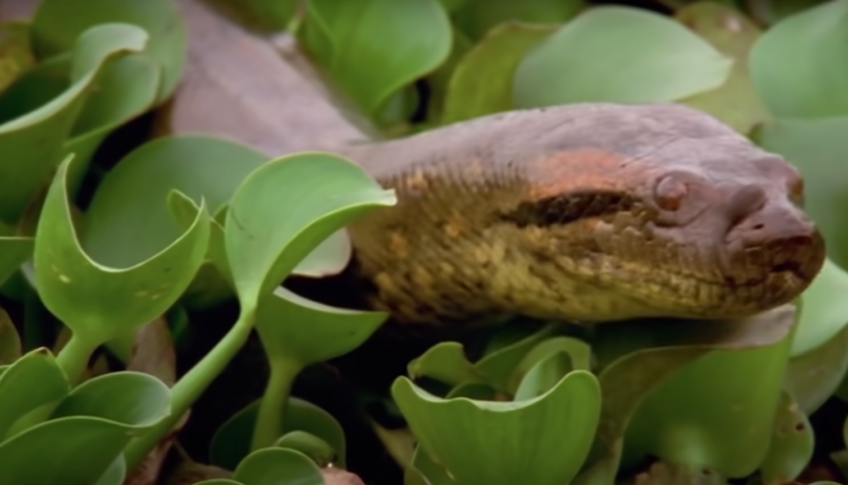
Examining their ecological roles further accentuates the distinctions between Titanoboa and Anacondas.
Titanoboa, in its prehistoric habitat, likely played a pivotal role in maintaining the balance of the aquatic ecosystem.
Its size and diet suggest it was a top predator, controlling fish populations.
On the other hand, modern Anacondas, as apex predators in their ecosystems, regulate the populations of a variety of species, thus maintaining the ecological balance in their habitats.
Behavioral Patterns
The behavioral patterns of Titanoboa and Anacondas also differ.
Given Titanoboa’s enormous size, it’s hypothesized that it led a largely aquatic life, perhaps to support its massive body and for efficient hunting.
Anacondas, while also spending a lot of time in the water, are known to bask in the sun on land and have a more adaptable lifestyle, moving across different terrains as per their needs.
Reproduction and Lifespan
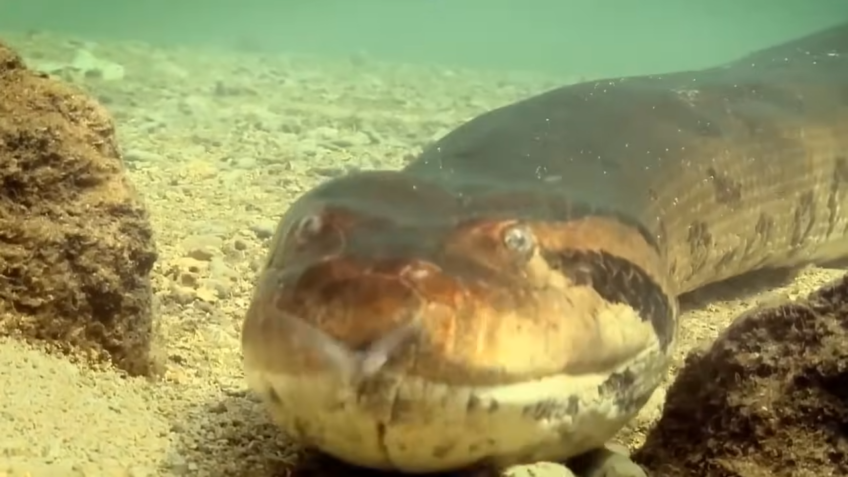
The reproductive habits and lifespan of these species are areas where we rely on scientific conjecture for Titanoboa, given its extinction.
Anacondas, however, are known for their unique breeding behavior, which includes forming breeding balls where multiple males surround a single female.
Information on Titanoboa’s reproduction and lifespan is based on scientific estimates derived from existing fossil records and comparisons with modern snakes.
Conservation Status
The conservation status of these snakes is starkly different. Titanoboa, having lived approximately 58 to 60 million years ago, is now extinct.
In contrast, Anacondas are currently facing various degrees of threat due to habitat destruction, hunting, and other human activities.
Their conservation is crucial for maintaining ecological balance in their habitats.
Cultural and Historical Significance

Titanoboa holds a significant place in paleontology, offering insights into prehistoric wildlife and climates.
Its discovery has helped scientists understand the ecosystem dynamics of the Paleocene Epoch.
Anacondas, aside from their ecological role, have a rich cultural significance in South America and globally, often featuring in folklore, literature, and media.
Challenges in Research and Knowledge
Studying Titanoboa primarily involves paleontological research, examining fossils and geological data.
In contrast, research on Anacondas involves active field studies, ecological surveys, and behavioral observations.
The knowledge about Titanoboa is thus more speculative and based on scientific reconstruction, while our understanding of Anacondas is continually updated with ongoing research.
Adaptations to Their Environments

The adaptations of Titanoboa and Anacondas to their respective environments are crucial in understanding their survival and dominance.
Titanoboa adapted to the lush, warm, and wet conditions of the Paleocene Epoch and developed a body size and structure that allowed it to thrive in its aquatic habitat.
This adaptation was crucial for hunting and mobility in the dense, prehistoric rainforests and water bodies.
Anacondas, on the other hand, have developed adaptations that allow them to thrive in diverse environments, from swamps to rivers and even dry land.
Their ability to swim and their flexible diet are key adaptations that have enabled them to be successful in various ecosystems within South America.
FAQs
Could Titanoboa and Anacondas have coexisted at any point in history?
No, they couldn’t have coexisted. Titanoboa lived during the Paleocene Epoch, around 58-60 million years ago, long before Anacondas appeared.
Are there any living descendants of Titanoboa?
There are no direct living descendants of Titanoboa. Modern snakes, including Anacondas, are distant relatives but not direct descendants.
How did scientists discover Titanoboa?
Scientists discovered Titanoboa through fossil remains, primarily vertebrae and cranial fragments, found in the Cerrejón Formation in Colombia.
Can Anacondas survive in the same habitats as Titanoboa once did?
Partially. While Anacondas can survive in tropical rainforests and near water bodies similar to Titanoboa’s habitat, they cannot survive in the exact prehistoric conditions Titanoboa experienced.
What is the biggest threat to Anaconda populations today?
The biggest threat to Anaconda populations is habitat destruction due to deforestation, urbanization, and pollution.
Were Titanoboas venomous or constrictors?
Titanoboas were likely not venomous. They were more akin to constrictors, but their exact hunting methods are not fully known due to limited fossil evidence.
Final Words
The comparison between Titanoboa and Anaconda reveals a tapestry of evolutionary marvels.
Knowing these differences not only enhances our knowledge of these magnificent creatures but also offers a glimpse into the rich history of our planet’s biodiversity.
While Titanoboa remains a symbol of prehistoric grandeur, Anacondas continue to awe and inspire as the largest snakes in the modern world.

